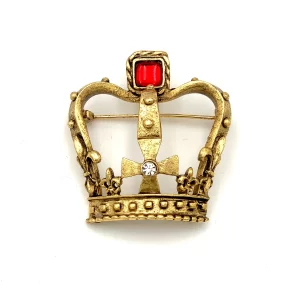The Kingdom of the United States of America

In following the long-established tradition of this site, I’m marking historical events of great importance by an entry into my blog.
In terms of historical importance, I feel being thrown back to the day of January 6th, when I sat in the basement of my house in Massachusetts working on a manuscript, and saw the US Capitol being attacked by hooligans, which later turned out to be Trump’s foot folk in his attempted coup. I went upstairs, telling my expanded family (expanded because of Covid-19): “stop whatever you are doing, turn on the TV, any station.”
Here is today’s Supreme Court’s decision on presidential immunity from criminal charges:
https://www.supremecourt.gov/opinions/23pdf/23-939_e2pg.pdf
. . . and here is Justice SOTOMAYOR, J. dissenting opinion:
(I have marked in bold the take-home message — she is as scared as we are)
SOTOMAYOR, J., dissenting
“Even though the majority’s immunity analysis purports
to leave unofficial acts open to prosecution, its draconian
approach to official-acts evidence deprives these prosecu–
tions of any teeth. If the former President cannot be held
criminally liable for his official acts, those acts should still
be admissible to prove knowledge or intent in criminal pros–
ecutions of unofficial acts. For instance, the majority strug–
gles with classifying whether a President’s speech is in his
capacity as President (official act) or as a candidate (unoffi–
cial act). Imagine a President states in an official speech
that he intends to stop a political rival from passing legis–
lation that he opposes, no matter what it takes to do so (of–
ficial act). He then hires a private hitman to murder that
political rival (unofficial act). Under the majority’s rule, the
murder indictment could include no allegation of the Presi–
dent’s public admission of premeditated intent to support
the mens rea of murder. That is a strange result, to say the
least.5
The majority’s extraordinary rule has no basis in law.
Consider the First Amendment context. Although the First
Amendment prohibits criminalizing most speech, it “does
not prohibit the evidentiary use of speech,” including its use
“to prove motive or intent.” Wisconsin v. Mitchell, 508 U. S.
476, 489 (1993). Evidentiary rulings and limiting instruc–
tions can ensure that evidence concerning official acts is
“considered only for the proper purpose for which it was ad–
mitted.” Huddleston v. United States, 485 U. S. 681, 691–
692 (1988). The majority has no coherent explanation as to
——————
5 The majority suggests, in a footnote, that a “prosecutor may point to
the public record to show the fact that the President performed the offi–
cial act,” so long as the prosecutor does not “invite the jury to inspect”
the act in any way. Ante, at 32, n. 3. Whatever that suggestion is sup–
posed to accomplish, it does not salvage the majority’s nonsensical evi–
dentiary rule.
SOTOMAYOR, J., dissenting
why these protections that are sufficient in every other con–
text would be insufficient here. It simply asserts that it
would be “untenable” and would deprive immunity of its
“ ‘intended effect.’ ” Ante, at 31 (quoting Fitzgerald, 457
U. S., at 756). The majority hazards an explanation that
the use of official-acts evidence will “raise a unique risk that
the jurors’ deliberations will be prejudiced by their views of
the President’s policies and performance while in office.”
Ante, at 31. That “unique risk,” however, is not a product
of introducing official-acts evidence. It is simply the risk
involved in any suit against a former President, including
the private-acts prosecutions the majority says it would al–
low.
VII
Today’s decision to grant former Presidents immunity for
their official acts is deeply wrong. As troubling as this crim–
inal immunity doctrine is in theory, the majority’s applica–
tion of the doctrine to the indictment in this case is perhaps
even more troubling. In the hands of the majority, this new
official-acts immunity operates as a one-way ratchet.
First, the majority declares all of the conduct involving
the Justice Department and the Vice President to be official
conduct, see ante, at 19–24, yet it refuses to designate any
course of conduct alleged in the indictment as private, de–
spite concessions from Trump’s counsel.6 Trump’s counsel
conceded, for example, that the allegation that Trump
——————
6 The majority protests that it is “adher[ing] to time-tested practices”
by “deciding what is required to dispose of this case and remanding” to
lower courts to sort out the details. Ante, at 41. Yet it implicitly acknowl–
edges that it reaches far beyond what any lower court considered or any
party briefed by designating certain conduct official in the first instance.
See ibid. (noting “the lack of factual analysis in the lower courts, and the
lack of briefing on how to categorize the conduct alleged”). In reaching
out to shield some conduct as official while refusing to recognize any con–
duct as unofficial, the majority engages in judicial activism, not judicial
restraint.
SOTOMAYOR, J., dissenting
“turned to a private attorney who was willing to spread
knowingly false claims of election fraud to spearhead his
challenges to the election results” “sounds private.” Tr. of
Oral Arg. 29. He likewise conceded that the allegation that
Trump “conspired with another private attorney who
caused the filing in court of a verification signed by [Trump]
that contained false allegations to support a challenge”
“sounds private.” Ibid.; see also id., at 36–37 (Trump’s
counsel explaining that it is not “disputed” that such con–
duct is “unofficial”). Again, when asked about allegations
that “[t]hree private actors . . . helped implement a plan to
submit fraudulent slates of presidential electors to obstruct
the certification proceeding, and [Trump] and a co-conspira–
tor attorney directed that effort,” Trump’s counsel conceded
the alleged conduct was “private.” Id., at 29–30. Only the
majority thinks that organizing fraudulent slates of elec–
tors might qualify as an official act of the President, see
ante, at 24–28, or at least an act so “interrelated” with other
allegedly official acts that it might warrant protection, ante,
at 28. If the majority’s sweeping conception of “official acts”
has any real limits, the majority is unwilling to reveal them
in today’s decision.
Second, the majority designates certain conduct immune
while refusing to recognize anything as prosecutable. It
shields large swaths of conduct involving the Justice De–
partment with immunity, see ante, at 19–21; see also Part
V, supra, but it does not give an inch in the other direction.
The majority admits that the Vice President’s responsibility
“ ‘presiding over the Senate’ ” is “ ‘not an “executive branch”
function,’ ” and it further admits that the President “plays
no direct constitutional or statutory role” in the counting of
electoral votes. Ante, at 23–24. Yet the majority refuses to
conclude that Trump lacks immunity for his alleged at–
tempts to “enlist the Vice President to use his ceremonial
role at the January 6 certification proceeding to fraudu–
lently alter the election results.” App. 187, Indictment
SOTOMAYOR, J., dissenting
¶10(d). Instead, it worries that a prosecution for this con–
duct might make it harder for the President to use the Vice
President “to advance [his] agenda in Congress.” Ante, at
24. Such a prosecution, according to the majority, “may
well hinder the President’s ability to perform his constitu–
tional functions.” Ibid. Whether a prosecution for this con–
duct warrants immunity should have been an easy ques–
tion, but the majority turns it into a debatable one.
Remarkably, the majority goes further and declines to deny
immunity even for the allegations that Trump organized
fraudulent elector slates, pressured States to subvert the
legitimate election results, and exploited violence at the
Capitol to influence the certification proceedings. It is not
conceivable that a prosecution for these alleged efforts to
overturn a Presidential election, whether labeled official or
unofficial under the majority’s test, would pose any “ ‘dan–
gers of intrusion on the authority and functions of the Ex–
ecutive Branch,’ ” ante, at 14, and the majority could have
said as much. Instead, it perseverates on a threshold ques–
tion that should be immaterial.
Looking beyond the fate of this particular prosecution,
the long-term consequences of today’s decision are stark.
The Court effectively creates a law-free zone around the
President, upsetting the status quo that has existed since
the Founding. This new official-acts immunity now “lies
about like a loaded weapon” for any President that wishes
to place his own interests, his own political survival, or his
own financial gain, above the interests of the Nation. Kore–
matsu v. United States, 323 U. S. 214, 246 (1944) (Jackson,
J., dissenting). The President of the United States is the
most powerful person in the country, and possibly the
world. When he uses his official powers in any way, under
the majority’s reasoning, he now will be insulated from
criminal prosecution. Orders the Navy’s Seal Team 6 to as–
sassinate a political rival? Immune. Organizes a military
30 TRUMP v. UNITED STATES
SOTOMAYOR, J., dissenting
coup to hold onto power? Immune. Takes a bribe in ex–
change for a pardon? Immune. Immune, immune, immune.
Let the President violate the law, let him exploit the trap–
pings of his office for personal gain, let him use his official
power for evil ends. Because if he knew that he may one
day face liability for breaking the law, he might not be as
bold and fearless as we would like him to be. That is the
majority’s message today.
Even if these nightmare scenarios never play out, and I
pray they never do, the damage has been done. The rela–
tionship between the President and the people he serves
has shifted irrevocably. In every use of official power, the
President is now a king above the law.
* * *
The majority’s single-minded fixation on the President’s
need for boldness and dispatch ignores the countervailing
need for accountability and restraint. The Framers were
not so single-minded. In the Federalist Papers, after “en–
deavor[ing] to show” that the Executive designed by the
Constitution “combines . . . all the requisites to energy,” Al–
exander Hamilton asked a separate, equally important
question: “Does it also combine the requisites to safety, in a
republican sense, a due dependence on the people, a due re–
sponsibility?” The Federalist No. 77, p. 507 (J. Harvard Li–
brary ed. 2009). The answer then was yes, based in part
upon the President’s vulnerability to “prosecution in the
common course of law.” Ibid. The answer after today is no.
Never in the history of our Republic has a President had
reason to believe that he would be immune from criminal
prosecution if he used the trappings of his office to violate
the criminal law. Moving forward, however, all former
Presidents will be cloaked in such immunity. If the occu–
pant of that office misuses official power for personal gain,
the criminal law that the rest of us must abide will not pro–
vide a backstop.
With fear for our democracy, I dissent.”
That a democracy, established through uncountable struggles involving pain, tears and bloodshed to death over decades more than 200 years ago, would revert back to the autocratic system it gloriously and successfully defeated, seems a sheer absurdity, yet here we are.
Six of the Supreme Court justices in their ideological blindness may have overlooked the omen of the impending Independence Day, which celebrates the establishment of the exact opposite of their vision: a system of government in which every person is equal under the law.
In fact, our situation is even more pathetic when seen in the larger historical context, since royal privilege was most often the result of the exercise of brutal force, not adulation or acclamation by the people. It seems as though our message to the American people is “we tried it; it didn’t work.”
.
.


Leave a Reply